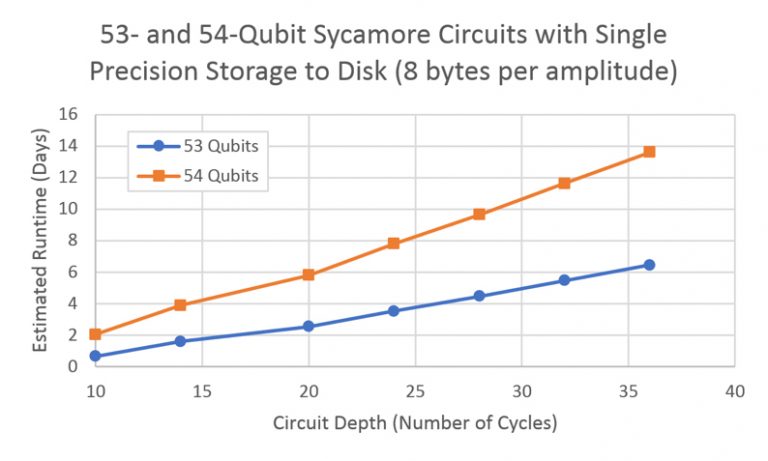
A very interesting paper from IBM Quantum Computing Team as an answer to the famous leaked preprint of Google regarding quantum supremacy.
Some excerpts:
Recent advances in quantum computing have resulted in two 53-qubit processors: one from our group in IBM and a device described in the leaked preprint from Google. In the preprint, it is argued that their device reached “quantum supremacy” and that “a state-of-the-art supercomputer would require approximately 10,000 years to perform the equivalent task.” We argue that an ideal simulation of the same task can be performed on a classical system in 2.5 days and with far greater fidelity. This is in fact a conservative, worst-case estimate, and we expect that with additional refinements the classical cost of the simulation can be further reduced.
This particular notion of “quantum supremacy” is based on executing a random quantum circuit of a size infeasible for simulation with any available classical computer. Specifically, the preprint shows a computational experiment over a 53-qubit quantum processor that implements an impressively large two-qubit gate quantum circuit of depth 20, with 430 two-qubit and 1,113 single-qubit gates, and with predicted total fidelity of 0.2%. Their classical simulation estimate of 10,000 years is based on the observation that the RAM memory requirement to store the full state vector in a Schrödinger-type simulation would be prohibitive, and thus one needs to resort to a Schrödinger-Feynman simulation that trades off space for time.
Building quantum systems is a feat of science and engineering and benchmarking them is a formidable challenge. Google’s experiment is an excellent demonstration of the progress in superconducting-based quantum computing, showing state-of-the-art gate fidelities on a 53-qubit device, but it should not be viewed as proof that quantum computers are “supreme” over classical computers.
A headline that includes some variation of “Quantum Supremacy Achieved” is almost irresistible to print, but it will inevitably mislead the general public.
